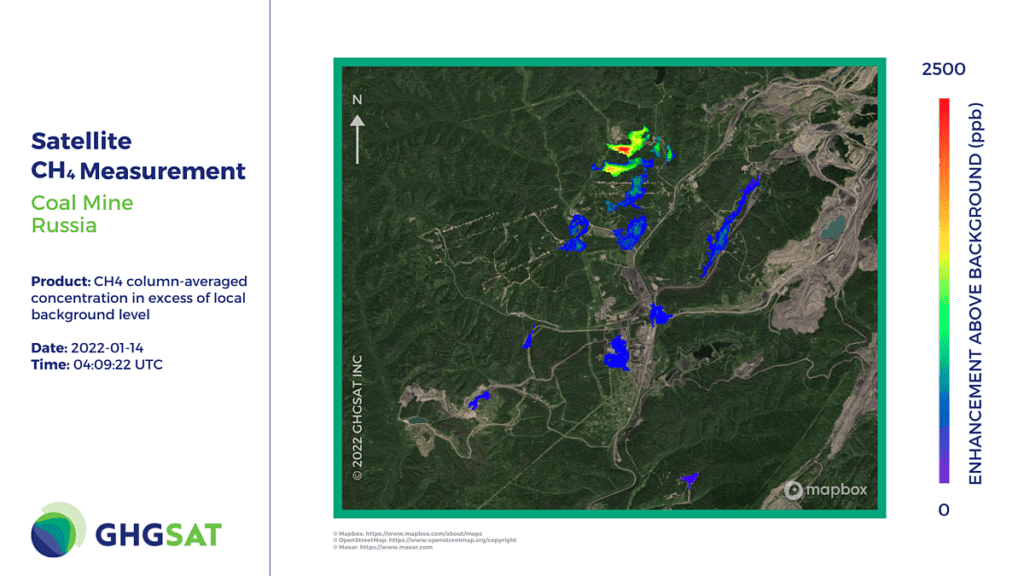A satellite has detected what could possibly be the world’s biggest leak of methane from a single industrial site, an underground coal mine in south-central Russia. While more short-lived than CO2, methane is an extremely potent greenhouse gas and is immensely important for our planet’s climate.

A satellite managed by GHGSat, a commercial emissions-monitoring firm, observed thirteen plumes of methane at the Raspadskya mine, the largest coal mine in Russia, in late January. About 90 tons an hour of the greenhouse gas was being released from the mine. This would be enough to produce natural gas to power 2.4 million homes.
The mine seems to be leaking methane at a lower rate now, about a third of the highest rate recorded in July — but it’s still an important methane contributor. Furthermore, the leak is believed to have been active for at least six months before January’s survey. GHGSat said the leak is about 50% bigger than any other leak seen since it started its global satellite monitoring back in 2016. Russia hasn’t reported the leak on its end.
In 2015, the biggest methane release in US history happened in an underground natural gas storage facility in Los Angeles. GHGSat estimates up to 58 tons an hour of methane was released. Three years later, GHGSat identified a malfunctioning oil well in Turkmenistan, which released 142,000 tons of methane between 2018 and 2019.
“We are seeing an increase in methane from this site generally, which could be the result of increased coal production, linked to global trends in coal use,” Brody Wight, head of energy and mines at GHGSat, said in a statement. “The leak would add 25% to the greenhouse gas emissions of burning any coal produced from the mine.”
The challenging methane
Russia is one of the leading sources of methane from fossil fuel extraction. The country’s gas infrastructure, including pipelines and production facilities, has been described as notoriously leaky despite calls to take action. A study last year showed methane emissions from Russian pipelines surged during the coronavirus pandemic.
All underground coal mines such as the Raspadskya mine produce methane, which can cause explosions if it accumulates. That’s why methane is usually vented for safety reasons. However, there are ways to capture the greenhouse gas when it’s produced at a high rate or vent it through oxidization, so it causes less harm to the climate.
Methane has a bigger effect on warming than carbon dioxide, the main greenhouse gas released by human activities. Over two decades, methane produces about 80 times the warming of the same amount of CO2. In February, the International Energy Agency warned that most countries were under-reporting their methane emissions.
However, there’s a silver lining: methane molecules break down faster in the atmosphere. This means that reducing intentional or accidental emissions of methane can have a much more immediate and significant impact than CO2 — and while it won’t help solve the climate crisis on its own, addressing methane emissions is a vital part of our climate plans.
Governments are already taking the first steps. At the climate summit COP26 in the UK last November, over 100 countries agreed to reduce their methane emissions by at least 30% by 2030. Russia wasn’t among them, however.









